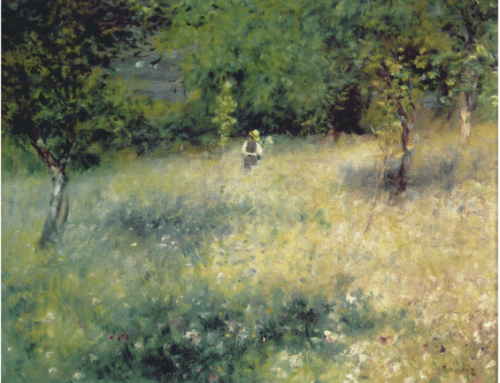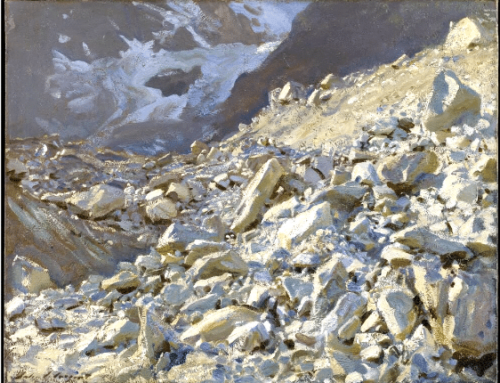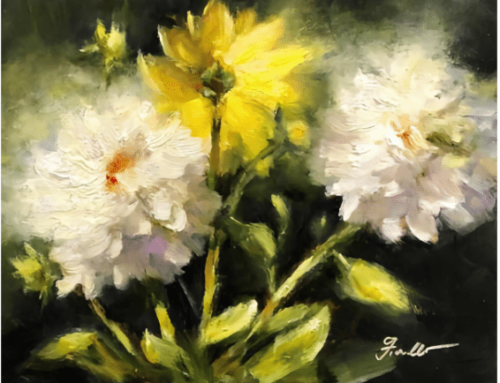Maine artist Tom Hall makes stark, apparently simple yet quite complex, mostly black and white paintings that deliver a visceral jolt of recognition – these aren’t paintings descriptive of Maine, they’re evocations of what Maine is and what it feels like to confront its landscape today, as a reflection of our troubled relationship to the natural world.
Hall lives in a tiny house and studio on Sebago Lake, Maine. It’s 1,000 square feet, with every nook prioritized for an artist’s life and work. “I call it,” he
told interviewer Angela Adams, “to paraphrase Le Corbusier…the great Swiss-French architect…a ‘Machine for making Art.’ I live alone so I can maximize my energy, and can focus on making the work. I see it much like a monk serving a greater good.”
 |
| Tom Hall’s house on Sebago Lake. |
That “greater good” is ministering to our strained relationship with the earth. Hall reminds us of there awesome power of the elements, and at times melds mystery with the manmade: dark trees and stubborn rocks stranded at the edge of a bone-colored or else inky void, or a field empty but for the bleak stubble of clearcutting.
Hall works small en plein air and later works up the paintings to much larger pieces in the studio. Frequent subjects include Monhegan Island and Mount Katahdin, which Hall thinks of as “rugged landscapes, hard scrabble and taciturn… yet full of beauty and wonder.”
 |
| Monhegan (detail of above) |
 |
| Monhegan – Detail |
With that painting of Monhegan (above), Hall is heir to perhaps the greatest Maine artist of the 20th century, Marsden Hartley. Note the similarity in composition and the treatment of the foreground rocks. Both artists are getting to the raw reality in the most primitive, unsophisticated way (in the sense of anti-sophistication), and therefore in the manner most expressive of the feeling he wants to convey.
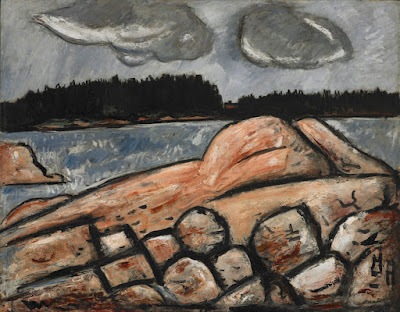 |
| Marsden Hartley, After the Storm, Vinalhaven, 1938-1939 |
It is the landscape of his childhood, one of “dirt roads, dusty and dangerous, with overloaded log trucks rumbling by,” he recalls. “My grandfather was always saying, ‘Look, there’s Katahdin!’ And out the jeep window… northeast across the great central plains of Maine … hiding behind Big and Little Spencer… was Katahdin… a vague and mysterious blue beyond.”
 |
| One of Hall’s Katahdin paintings |
 |
| These are large paintings; you interact with them in a personal, physical manner. |
Hall’s paintings give us the rain-slick rocks and burnt-match blacks of backlit pines and dwellings, humped mountains, and tide-lashed islands at dusk and on on gray-sky days. They are also very beautiful. They have a talismanic, object-like quality, extensively layered, scraped and worked-over as they are.
 |
| Detail from above |
 |
| Detail from above |
Art historian Daniel Kany says of Hall’s approach, “We could talk about Tanka paintings, Zen calligraphy and so on, but the point is that paintings have long and widely been seen as conduits for forces not limited to the visible world. They aren’t simply snapshots of something else.
Traditionally, this has been associated with religion or spirituality. But postwar American painting such as Abstract Expressionism has been more like a practice in which your consciousness and your body encounter a thing which is a catalyst for pleasing self-awareness…. This is how Hall’s best paintings achieve the power of mandalas or paintings by Rothko, Malevich, Ad Reinhardt or Barnet Newman.”
There’s a stripped-down, essential quality to the work, and though the shapes are simple, the surfaces are intricately textured. Hall’s paintings are executed in mixed media, which includes water-based paints and varnishes, charcoal, paper collage, duct tape, and other materials on canvas or linen. His practice is to sketch in pastel on site and work up the large paintings later, in the studio.

 |
| detail from above |
 |
| (detail) |
———–
Pastel Painter Takes Painting from Photos to the Next Level
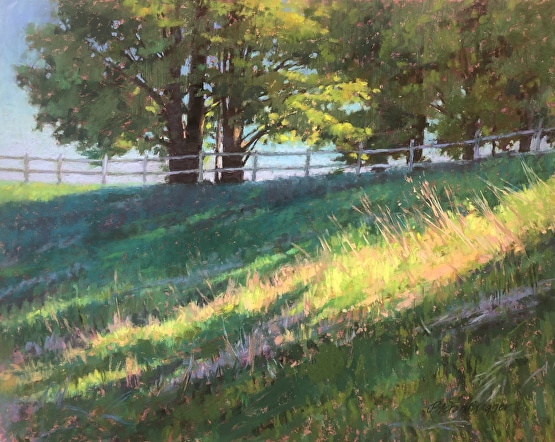
Jill Stefani Wagner pushes photos firmly into the realm of “painterly” work in pastel.
Far from simply copying photos, pastel artist Jill Stefani Wagner uses them more like sparks for creativity. Wagner is known for her masterful ability to turn reference photos into compositions of shadows and light that glow with vibrant shapes, values, color and color temperatures. She shares her process in the video
5-Step Paste Painting and in an upcoming video release titled Pastel Painting from Photos due out later this month. Don’t forget that
the largest ever online training event,
Pastel Live, is taking sign-ups for the three-day Web event scheduled for March.
———–
We’re All Feeling the Heat – Send Us Your Work!
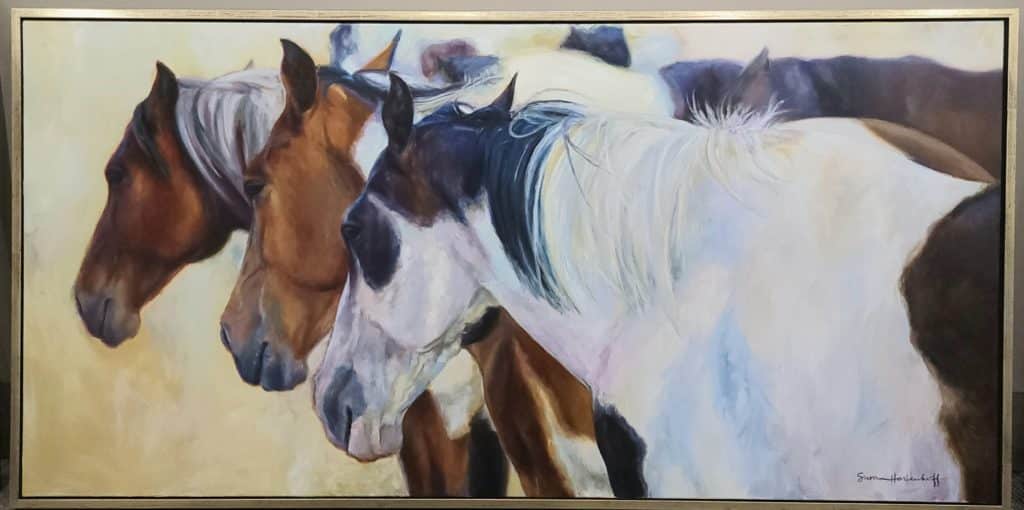
Susan Hartenhoff, “Drowsy Afternoon,” 60″ x 28″ oil, 2022
With much of the country enveloped in a a wicked heatwave, it isn’t just humans trying to stay cool. Artist Susan Hartenhoff evokes the long hot days in the gestures of her horses in her painting “Drowsy Afternoon.” Susan sent us this picture of her work in answer to our call in Inside Art for paintings showing something of the hot summer days. Send us your paintings if you’d like to be considered for inclusion in an upcoming edition of Inside Art.
In the Paint,
Chris



























